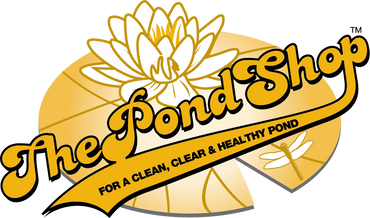A thriving, beautiful pond can be the centerpiece of any landscape — but when invasive pondweeds take over, it quickly becomes a murky, tangled mess. Preventing pondweed growth is essential for maintaining a healthy aquatic ecosystem and preserving the aesthetic appeal of your pond. In this post, we’ll explore three effective methods for pondweed prevention: pond dye, mechanical control, and biological control using beneficial bacteria.
1. Pond Dye: A Simple and Effective Preventative Measure
Pond dye is an easy, non-toxic solution that can help prevent pondweed growth by reducing sunlight penetration. Since aquatic plants rely on sunlight for photosynthesis, limiting light exposure can slow down or even stop their development. By adding a safe, eco-friendly pond dye, you can maintain a pleasing blue or black water tint while inhibiting weed growth. Pond dye works best as a preventative measure, so it’s most effective when applied early in the season before pondweed takes hold.
2. Mechanical Control: Physical Removal of Pondweed
When pondweed starts to spread, mechanical control methods offer a direct approach to removing it. Tools like rakes, cutters, and skimmers can be used to physically remove pondweed from the water. For larger ponds, specialized equipment like aquatic weed harvesters can make the job easier. While mechanical control is effective, it requires consistent effort to prevent regrowth, especially if root systems remain in the pond.
3. Biological Control: Harnessing Beneficial Bacteria
Biological control methods use naturally occurring beneficial bacteria to break down organic matter, like decaying plants and fish waste, that fuels pondweed growth. By adding beneficial bacteria products to your pond, you can improve water quality, reduce nutrient loads, and limit the conditions that encourage weed proliferation. This eco-friendly approach not only controls pondweed but also helps maintain a balanced and healthy ecosystem.
Creating a Balanced Approach
For the best results, a combination of these methods often works best. Start the season with pond dye to prevent excessive growth, use mechanical control to manage any visible weeds, and regularly add beneficial bacteria to maintain water quality. By staying proactive and using these integrated strategies, you’ll enjoy a clearer, healthier pond all season long.
